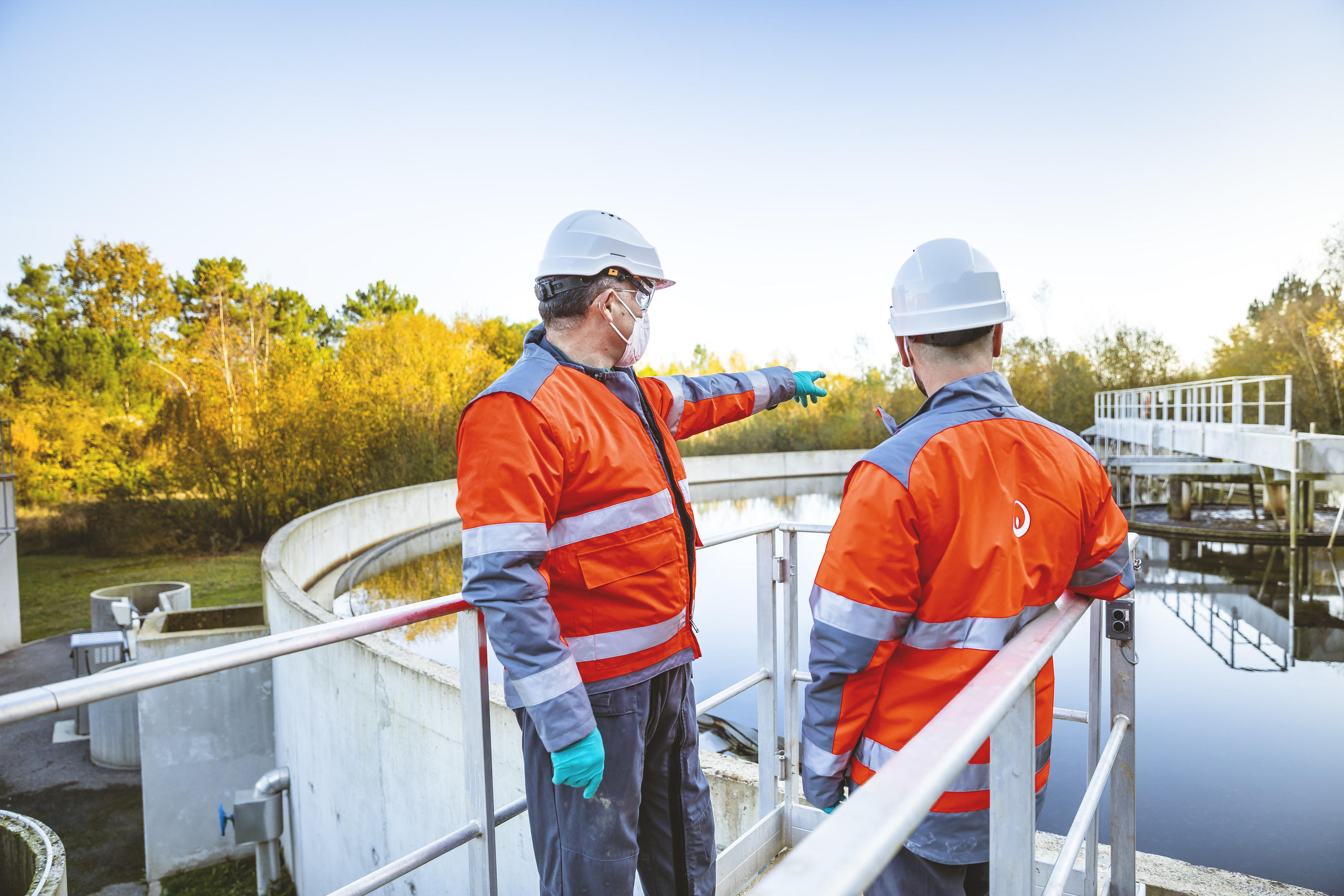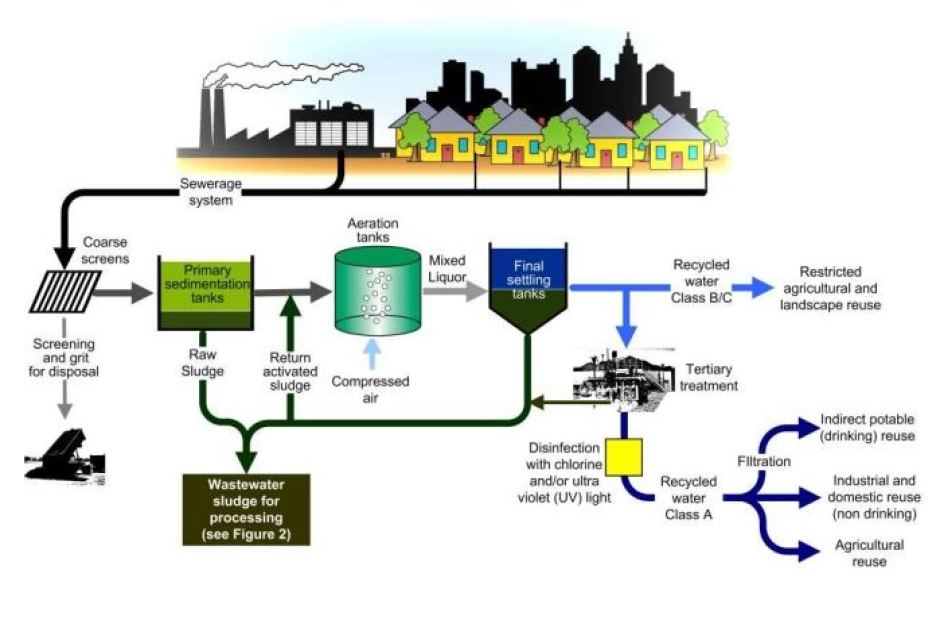Industrial Waste Water Treatment-- Sustainable Solutions for Industrial Water Monitoring
Industrial Waste Water Treatment-- Sustainable Solutions for Industrial Water Monitoring
Blog Article
Difficulties and Solutions in Hazardous Waste Water Treatment
The therapy of industrial wastewater presents a multifaceted selection of challenges, varying from strict regulatory compliance to the complexities of cost administration and technological restrictions. The variability in waste structure further complicates the performance of standard therapy techniques, commonly resulting in risen operational expenses.
Regulatory Conformity Obstacles
Exactly how can industrial facilities navigate the facility landscape of regulatory compliance in wastewater treatment? The regulatory structure governing wastewater administration is complex, usually varying by jurisdiction and sort of industry. Facilities must follow government, state, and neighborhood laws that determine effluent quality standards, discharge limits, and surveillance requirements. Failing to conform can result in serious penalties, including penalties and operational shutdowns.
To effectively take care of these conformity challenges, facilities must implement durable monitoring and reporting systems that make certain real-time data collection and evaluation. Routine audits and danger analyses can recognize prospective compliance spaces, allowing for aggressive changes in therapy procedures. Employee training programs concentrating on regulative understanding and finest practices are vital to cultivate a society of conformity within the organization.
Additionally, engaging with regulative agencies can give beneficial insights and clear up uncertain regulations. Facilities may also profit from seeking advice from environmental experts that focus on wastewater treatment conformity, making certain that they remain abreast of advancing regulations. By taking on these methods, commercial centers can not just satisfy conformity needs however also boost their operational effectiveness and environmental stewardship.
Cost and Financial Barriers
Browsing regulatory compliance in wastewater treatment commonly presents considerable economic challenges for commercial centers. The expenses connected with carrying out necessary treatment innovations, keeping compliance with stringent policies, and managing functional expenses can be intimidating. Many companies encounter high first capital investment for the building and construction or upgrading of wastewater therapy plants, which might stress budgets, particularly for medium-sized and little enterprises.
Furthermore, ongoing operational expenses, including labor, chemical, and maintenance inputs, add to the monetary burden. The changability of changing power rates and the possible requirement for extra investments to fulfill advancing laws exacerbate these economic pressures. Oftentimes, the absence of monetary rewards or assistance from federal government bodies makes it even a lot more tough for businesses to justify financial investments in sophisticated treatment systems.
Additionally, the financial viability of wastewater treatment remedies is frequently questioned, especially for markets with limited revenue margins. It is essential for industrial facilities to discover affordable strategies, such as embracing cutting-edge funding alternatives, engaging in partnerships, and leveraging arising technologies that can help minimize these financial barriers while making certain compliance with ecological standards.

Technological Limitations
Various technical limitations hinder the performance of industrial wastewater therapy procedures. One significant challenge is the inadequacy of existing treatment technologies to resolve complex contaminants.
Furthermore, the scalability of therapy modern technologies postures a difficulty. While some innovative techniques, like membrane layer filtering or advanced oxidation, reveal promise in regulated settings, their application on a larger range can be technically challenging and excessively expensive. Upkeep and operational intricacies better complicate the adoption of these systems, specifically for smaller sized sectors with minimal technological experience.
The integration of real-time tracking technologies likewise continues to be not enough in numerous therapy centers. Without effective tracking systems, operators can not appropriately assess therapy effectiveness or spot possible failures, bring about inconsistent effluent high quality. Resolving these technological limitations through study and development, along look at this website with investment in ingenious options, is critical for improving the effectiveness of industrial wastewater treatment and ensuring regulatory conformity.
Irregularity in Waste Structure
In the realm of industrial wastewater therapy, the variability in waste structure provides a formidable difficulty. Industries create wastewater with diverse features, affected by elements such as manufacturing processes, resources, and operational methods. This diversification complicates the therapy procedure, as standard systems usually have a hard time to effectively resolve the large range of pollutants existing.
For example, wastewater from food processing may include high levels of natural matter, while effluents from chemical production can consist of hazardous compounds and hefty steels. This variance requires versatile therapy strategies to guarantee compliance with environmental laws and shield public health and wellness. Furthermore, changes in waste structure can happen over time, affected by adjustments in production schedules, upkeep tasks, or the introduction of brand-new products.

Innovative Therapy Solutions
Innovative treatment options are necessary for resolving the complexities of industrial wastewater monitoring. Typical approaches commonly fall short in efficiently getting rid of a vast array of pollutants, especially in facilities with varied effluent streams. Current innovations concentrate on incorporating sophisticated innovations to enhance treatment efficiency and sustainability.
One appealing approach is using innovative oxidation procedures (AOPs), which take advantage of effective oxidants to break down natural toxins. AOPs, including photocatalysis and ozonation, can dramatically reduce toxic compounds and improve effluent quality. Additionally, membrane bioreactor (MBR) technology has actually obtained grip, integrating biological therapy with membrane purification, causing high-grade effluent and lowered footprint.
One more cutting-edge solution is the implementation of source recovery systems. Techniques like anaerobic food digestion not only treat wastewater yet likewise generate biogas, which can be utilized as an eco-friendly power resource. The adoption of man-made intelligence and maker knowing versions can enhance therapy procedures by predicting variants in wastewater structure, thus improving functional effectiveness.
These innovative options not just address regulatory compliance yet likewise advertise environmental sustainability, paving helpful resources the way for an extra efficient and durable industrial community.
Verdict
In final thought, resolving the challenges of commercial wastewater treatment requires a complex method that incorporates regulative compliance, cost monitoring, and technological advancements. Innovative services, such as innovative oxidation processes and membrane layer bioreactor modern technology, offer paths to enhance therapy performance. Real-time monitoring systems and joint interaction with regulatory agencies can advertise lasting practices while mitigating economic stress. A dedication to continual enhancement in treatment methods will eventually add to the effective management of industrial wastewater and ecological defense.
The therapy of industrial wastewater offers a multifaceted range of obstacles, varying from stringent regulatory conformity to the details of price management and technical constraints. Industrial Waste Water Treatment.Navigating governing conformity in wastewater treatment frequently offers significant financial obstacles for industrial centers. Dealing with these technological restrictions through study and advancement, together with investment in ingenious services, is essential for boosting the efficacy of industrial wastewater therapy and making certain regulative compliance
Wastewater treatment centers must spend in durable monitoring systems and versatile therapy modern technologies capable of fitting varying influent qualities.In verdict, addressing the challenges of commercial wastewater treatment requires a multifaceted technique that incorporates regulatory compliance, expense administration, and technological innovations.
Report this page